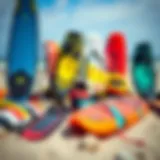Mastering Wind Meters: A Guide for Kiteboarders
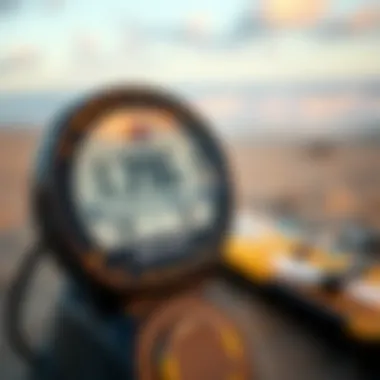
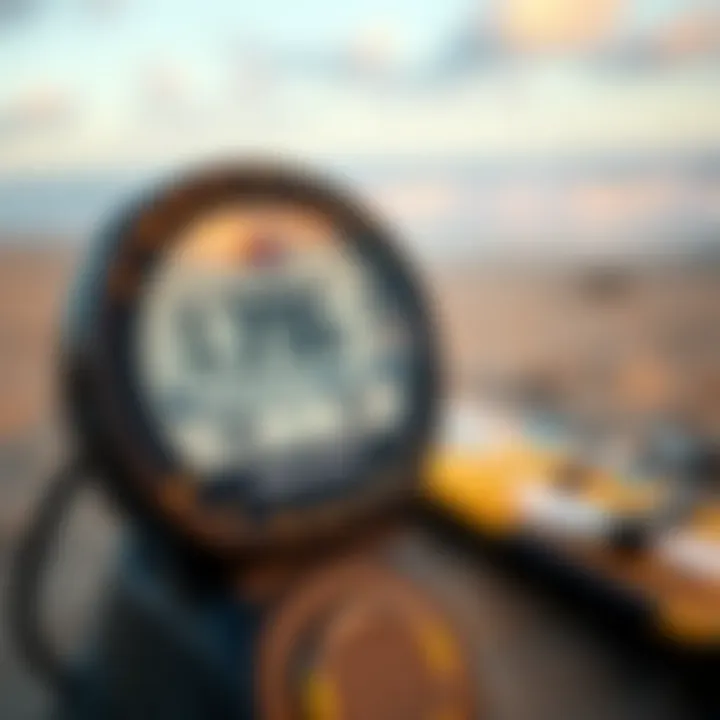
Intro
Kiteboarding offers a thrilling way to skim across the water while harnessing the power of the wind. For enthusiasts hoping to catch the perfect breeze, understanding how weather wind meters work becomes essential. These devices can provide crucial information about wind speed and direction, enabling kiteboarders to make informed decisions on when and where to ride.
By delving into the significance of wind meters, kiteboarders can learn to interpret their data effectively, enhancing both safety and performance. It’s not just about feeling the wind on your face; it’s about knowing how to read the signs it offers. Joining the ranks of savvy riders means grasping the interplay between your gear, the wind, and the water below.
This article breaks down the key elements of choosing the right gear and developing skills tailored to kiteboarding’s unique demands. Whether you're just dipping your toes into the sport or you’ve been tearing up the waves for years, understanding how to leverage wind data from meters can elevate your experience.
Navigating these waters isn't just about technique; it’s about understanding the environment, knowing how to engage with it, and staying safe while doing so.
Foreword to Weather Wind Meters
Understanding weather wind meters is essential for kiteboarders who wish to enhance their riding experience. Be it a gentle breeze on a sunny day or turbulent gusts rolling in from the ocean, the right information about wind conditions can make or break a kiteboarding session. Kiteboarding is a sport that relies heavily on wind dynamics, making wind meters not just tools, but vital companions on the water.
Definition and Purpose
Wind meters, often referred to as anemometers, are devices designed to measure wind speed and direction. They serve as the eyes and ears of kiteboarders in understanding the ever-changing nature of wind conditions. A kiteboarder’s performance can be drastically altered based on accurate wind readings. These devices allow riders to adjust their gear and technique depending on the wind’s behavior. In essence, knowing the wind is like having a sixth sense; it can lead to safer and more enjoyable experiences.
"When you know the wind, you can dance with it, not battle against it."
Historical Context
The history of wind measurement can be traced back to the ancient Greeks, who devised simple tools to gauge wind speed. Fast forward to the late 18th century, the development of more sophisticated anemometers came about, giving rise to the more reliable instruments we use today. Kiteboarding itself is a relatively young sport, born from the creative spirit of windsurfers and other water sports enthusiasts in the 1990s. As kiteboarding gained popularity, so did the need for precise wind measurement tools. Today, kiteboarders can access top-notch technology that not only measures wind speed but also provides real-time data, bridging the gap between history and modern practices.
Understanding the intricacies of how wind meters evolved is paramount, as it lays the groundwork for their importance in kiteboarding. Without the advancements in measuring technology, the art of mastering the wind would remain an elusive challenge.
Types of Weather Wind Meters
When it comes to kiteboarding, understanding the types of weather wind meters does not just make for smoother sailing; it can be the difference between a thrilling day out on the water and a hazardous one. Wind meters are vital for kiteboarders, as they allow athletes to gauge conditions accurately and make informed decisions. This section delves into various wind meters, including anemometers, portable devices, and advanced meteorological stations, all of which play a significant role in interpreting wind data.
Anemometers
Anemometers are essential tools in measuring wind speed and direction, the fundamental aspects kiteboarders must keep track of. The ability to determine how hard the viento is blowing can help in choosing the right kite size and ensuring safety. There are several variants of anemometers; each comes with its own set of features and quirks.
Mechanical Anemometers
Mechanical anemometers are like the old-school champions of the wind measurement world. They typically rely on rotating cups or blades to measure wind speed. The key characteristic here is their simplicity. These devices are generally easy to use and don’t require batteries, which can be a lifesaver in remote locations.
However, they do need regular calibration. Mechanical anemometers might struggle in extreme wind conditions, overestimating speeds during strong gusts. That said, for hobbyists and casual kiteboarders looking for straightforward measurements, they remain a beneficial choice.
Digital Anemometers
Digital anemometers offer a more modern approach, utilizing electronic sensors to calculate wind speed. Their key characteristic is precision—many digital models can show measurements in real-time and often include features like data recording and averages over time. This can be handy for kiteboarders who want to make the most out of their rides.
The unique feature here is their ability to connect to smartphones or computers, offering an in-depth analysis of wind conditions that mechanical types simply cannot. Nevertheless, these devices rely on batteries, which can be a disadvantage if you're out for a long day.
Cup Anemometers
Cup anemometers are probably the most recognizable form of wind measurement devices. They have three or four cups attached to horizontal arms on a vertical shaft. The wind blows into the cups, causing them to rotate, which correlates directly with wind speed. The key characteristic of cup anemometers is their robust construction and ability to provide continuous readings.
This makes them a popular choice for serious kiteboarders who seek reliable data during windy conditions. However, like other mechanical devices, they can face limitations when it comes to measuring very light or very strong winds accurately.
Portable Wind Meters
Portable wind meters are particularly appealing to kiteboarders, given their lightweight and convenient nature. These handheld devices can easily fit into a pocket while providing reliable readings on the road or out on the waves.
Handheld Devices
Handheld wind meters are compact, often designed for ease of use on the go. The key characteristic of these devices is their portability. They typically come equipped with a display that shows current wind speed, which is invaluable for assessing the best time to launch.
A unique feature of handheld meters is that many of them have additional functionalities like temperature or humidity readings. However, they require regular battery changes, and some users find them less accurate than stationary models. Still, they offer significant flexibility for any kiteboarder hitting various locations.
Smartphone Applications
With the advent of technology, smartphone applications have taken the wind measurement game to the next level. Many social apps leverage data sources to provide live wind updates. The key characteristic here is accessibility—kiteboarders can simply pull out their phones for instant information.
These apps often include maps and forecasts, making it easy to find optimal riding spots. The unique feature is their integration with local weather data, which can offer real-time updates. However, they depend on cellular connectivity which can be a drawback in remote areas.
Meteorological Stations
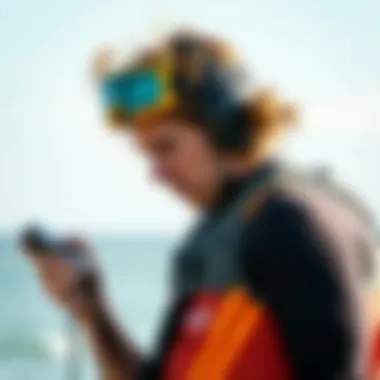
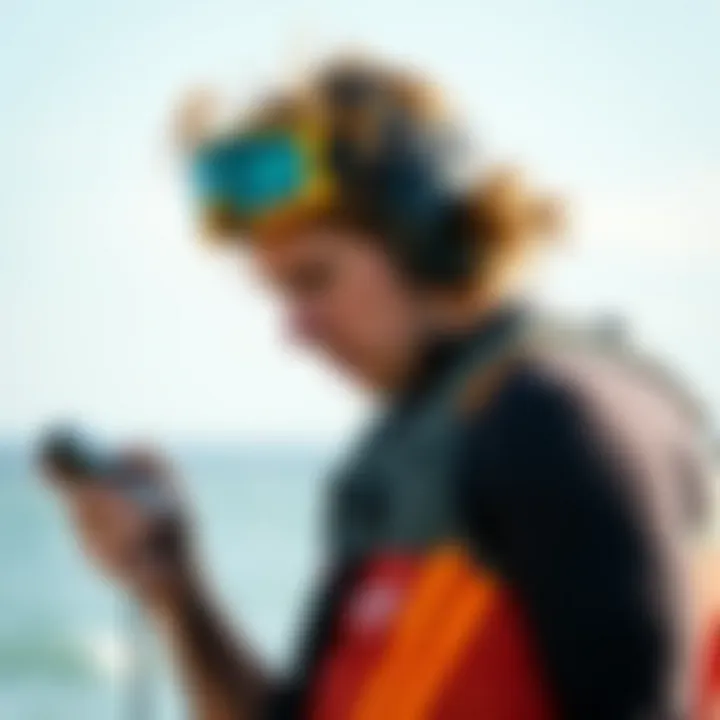
For those serious about kiteboarding, meteorological stations offer comprehensive weather data. These are often part of wider networks that monitor a variety of conditions, making them extremely useful for expert kiteboarders.
Stationary Stations
Stationary meteorological stations provide consistent and reliable wind measurements over time. The key characteristic of these setups is their accuracy. They collect data continuously and can often display changes swiftly.
The advantages here are numerous, from reading historical data trends to understanding local wind behavior over days or months. Yet, they do require installation and aren’t quite portable, which may deter casual users.
Remote Monitoring Devices
Remote monitoring devices allow for advancements in convenience, as they typically can send readings straight to the cloud. The key characteristic is automation. Many kiteboarders appreciate the ability to receive updates on their phones.
These devices usually come equipped with advanced sensors for wind analysis and can function even in extreme conditions. However, investing in this technology can be pricey, making them more suitable for dedicated enthusiasts.
Understanding Wind Measurements
To navigate the exhilarating world of kiteboarding, grasping the intricacies of wind measurements is not merely important—it is essential. Understanding the nuances of wind speed, direction, and gust factors empowers kiteboarders to make informed decisions. This knowledge can be the difference between an exhilarating ride and an unsafe experience.
Wind Speed
Wind speed is arguably the most critical element for kiteboarders. It’s not just about how fast the wind is blowing; it’s about knowing how that speed translates into your riding experience. Kiteboarding requires you to match your kite size to the wind speed, and getting this part wrong could land you in a sticky situation.
When you check the wind speed, let’s say it reads 15 knots. That information alone may sound straightforward, yet the implications are profound. Different kites have different optimal ranges. For instance, a lightweight rider might find 15 knots to be perfect to launch a smaller kite, while a heavier rider may prefer to work with a larger one, which can handle more wind.
It’s crucial to get up to date with the various scales used for measuring wind speed. Here’s a quick rundown:
- Knots: Commonly used in marine and aviation contexts.
- Miles per hour (mph): Used primarily in the United States.
- Kilometers per hour (km/h): A metric alternative popular in many countries.
By being attuned to these units, you can confidently select the appropriate gear for your adventure.
Wind Direction
Wind direction is another linchpin in the kiteboarding experience. Knowing which way the wind is blowing enables kiteboarders to align their kites effectively. Wind direction is typically measured in degrees, with 0° being north, 90° east, 180° south, and 270° west. Understanding these bearings helps kiteboarders position themselves optimally on the water.
For kiteboarding, a wind coming from the side (known as cross-shore wind) is often ideal. It provides plenty of power while still allowing for control. Conversely, headwinds can present challenges that might require specific techniques to tackle. A wind direction report can often be visualized on a wind rose diagram, which highlights prevailing winds in a given area.
It's important to note how local geographical features can affect wind direction. For example, if you’re kiteboarding near hills or buildings, watch out—the wind could shift unexpectedly. Always be aware of these changes!
Gust Factors
Understanding gust factors requires kiteboarders to think not just about consistent wind speeds but also the variability that often plagues these conditions. Gusts are short bursts of wind that can be much stronger than the average wind speed, causing a jolt when you're least prepared for it. The effects of gusts can be severe, causing loss of control.
When you're on the water, a gusty wind may increase from a steady 12 knots to 20 knots in a heartbeat. Imagine freely gliding, enjoying the thrill, when suddenly a gust comes in, tugging at your kite. It could mean the difference between an enjoyable ride and a precarious situation.
To prepare for these gusts, it’s advisable to:
- Monitor the wind regularly: Keep an eye on your wind meter to catch any changes in real-time.
- Adjust your kite size: Larger kites catch more wind, making them more susceptible to gusts. If you know gusts are expected, it could be better to opt for a smaller kite.
- Choose your riding time: Sometimes, it’s wise to wait it out and let the wind settle before hitting the waves.
"Preparation is the key to unlocking the best kiteboarding experience. Knowledge of wind speed, direction, and gust factors can safeguard your adventure."
Careful consideration of wind measurements is vital for maximizing performance and ensuring safety. By being proactive and informed, kiteboarders can fully embrace the wind’s unpredictable nature while maintaining control in any conditions.
Interpreting Wind Data
Interpreting wind data is crucial for kiteboarders aiming to maximize their time on the water safety and performance. Understanding how to analyze different sources of wind information can mean the difference between a fantastic session and a day cut short by unforeseen conditions.
Reading Wind Charts
Wind charts are graphical representations that show the speed and direction of winds in a certain area at a particular time. For kiteboarders, these charts hold vital information, which if interpreted correctly, can lead to a more enjoyable experience on the water. Typically, one can find wind charts on various weather websites or apps, often highlighting not just current conditions but predictions for the upcoming hours.
- Speed is often represented in knots or miles per hour, with greater speeds usually indicated in brighter colors.
- Directions are often depicted using arrows that show where the wind is coming from.
- Learn to distinguish symbols, as charts might use different representations based on the source.
The benefit of reading wind charts lies in their ability to forecast changing conditions. Knowing that a storm is brewing or that winds are dying down empowers kiteboarders to make informed decisions—choosing whether to hit the water immediately or to delay and wait for better circumstances.
Analyzing Wind Patterns
Beyond just looking at a snapshot of wind data, understanding wind patterns helps kiteboarders predict how the conditions might evolve.
Observing wind shifts is crucial. For instance:
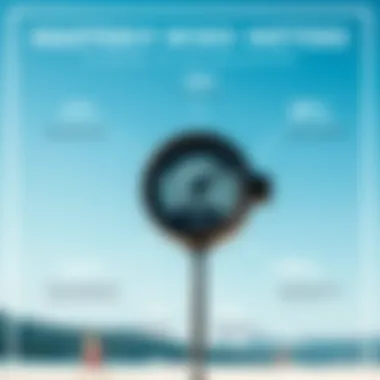
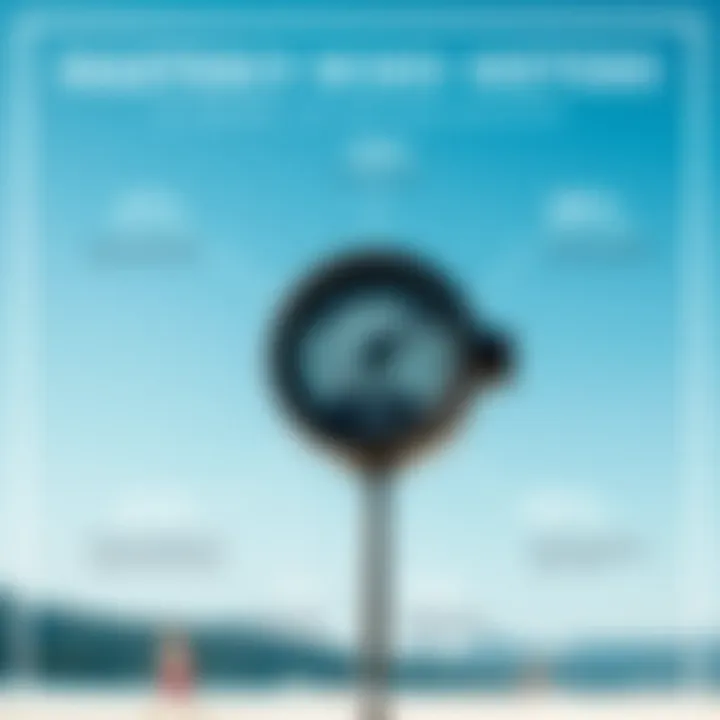
- Daily wind patterns can often follow a predictable routine—like morning and evening breezes typical in coastal areas.
- Seasonal changes may affect wind conditions significantly. Summer might bring consistent onshore breezes, whereas winter could mean variable winds.
By keeping an eye on these patterns over time, kiteboarders can determine the best times to go out. It is not just about immediate readings but connecting the dots over weeks or months, allowing one to anticipate conditions before heading out.
Real-Time Wind Reports
In today's fast-paced world, real-time wind reports are invaluable. Many kiteboarders rely on instant updates to know what conditions are like right now. Several services offer updates via mobile apps or websites, feeding data from weather stations, buoys, and personal weather stations that slight improvements in accuracy.
Benefits include:
- Immediate access to wind speed and direction, helping to decide on the spot whether to kite or not.
- Alerts for sudden changes in weather, like gusts or storms, that can catch a person off guard.
- Information coming from several locations leading to a thorough understanding of local conditions rather than relying on a single source.
Utilizing these reports effectively can elevate a kiteboarder's experience, ensuring times on the water are not only thrilling but also safe. Always remember, a kiteboarder is only as good as their understanding of the wind.
Practical Applications for Kiteboarders
Understanding weather wind meters is not just a technical endeavor; it’s about enhancing your kiteboarding experience. Kiteboarders, whether beginners or seasoned pros, can draw immense benefits from recognizing how wind meters function and how to interpret the data they provide. The wind can change like a flick of a switch, and knowing where you stand in terms of wind conditions can mean the difference between a thrilling ride and an unfortunate tumble into the water.
Selecting Ideal Conditions
To select the right time and location for kiteboarding, you need to harness the data wind meters provide. It’s essential to match your skill level and the kite's requirements with current wind conditions. For instance, a kiteboarder accustomed to moderate winds might struggle with gusty, high winds that exceed their comfort zone.
Here’s what you can do:
- Monitor Wind Speeds: Aim for wind speeds that facilitate safe and enjoyable rides. For instance, a breeze of about 15 to 25 knots is often ideal for most recreational kiteboarders.
- Understand Direction: Wind direction can markedly affect your riding experience. Off-shore winds might keep you at bay and lead to potentially dangerous conditions. Therefore, prefer side-on or onshore winds for safety.
- Time of Day: Be aware that winds can vary throughout the day. Morning winds are often steadier, but afternoon gusts can bring chaos.
Keeping an eye on local wind reports and tracking changes throughout depends critically on modern wind meters.
Safety Considerations
Safety is paramount in kiteboarding, and understanding wind data can minimize risks significantly. Poor judgment regarding wind conditions can lead to accidents or dangerous situations.
- Gust Awareness: Wind gusts can be deceptive. Real-time wind measurements can help gauge when those gusts occur.
- Equipment Checks: Regular wind monitoring enables you to prepare your gear accordingly. Not every kite is designed to handle strong winds, and knowing the conditions in advance can save you costly repairs or replacements.
- Plan for Emergencies: In case things go awry, understanding your local wind patterns and how quickly they shift can allow you to navigate back to safety. Have a strategy in mind about how to respond to sudden wind changes.
For kiteboarders, wind meters serve as a window into nature’s whims—get to know that window well.
Optimizing Performance
Kiteboarding isn’t merely about maintaining balance on the board; it’s about maximizing your performance on the water, which heavily depends on wind conditions.
- Fine-Tuning Equipment: Knowing the ideal wind speeds allows you to adjust your equipment, enhancing your performance. For instance, swapping to a smaller or larger kite based on the wind conditions can greatly alter your speed and maneuverability.
- Training Focus: As different wind conditions require various skill sets, a clear understanding of the current conditions enables you to focus your training. You can challenge yourself in moderate winds or refine techniques under varying conditions.
- Competition Readiness: Competitors must be acutely aware of wind conditions leading up to events. Wind meters help in planning warm-ups and adjusting tactics for races or freestyle competitions, ensuring you hit peak performance at just the right moment.
Navigating through confidence and skills in kiteboarding can be sharpened through intelligent use of weather wind meters. Engage with the wind through knowledge, so you ride not just safely, but also brilliantly.
Factors Influencing Wind Conditions
Understanding the factors that influence wind conditions is essential for kiteboarders looking to maximize their experience on the water. Different aspects can shape the wind patterns at your chosen location, affecting not only the strength and direction of the winds but also the overall safety and performance of your time kiteboarding.
There are three primary influences worth delving into: geographical influences, seasonal variations, and local weather systems. These factors create a unique wind environment at every location, making it crucial for kiteboarders to comprehend and adapt to these fluctuations.
Geographical Influences
Geography plays a significant role in the wind you’ll encounter while kiteboarding. Different landscapes can create unique wind patterns. For instance, when you are near mountains, the wind may funnel through valleys, causing it to pick up speed. Conversely, an open coastal area may see steadier breezes, influenced more by the land-sea temperature differential.
In addition to mountains and coastlines, structures like buildings can affect wind flow. Urban areas often have what’s termed an urban heat island effect, where temperatures are higher due to human activity and infrastructure, which can change local wind patterns. If you’re kiteboarding near a city, you might notice strong gusts caused by buildings interrupting the wind flow, which can be tricky.
Seasonal Variations
Seasons change the weather, and wind patterns are no exception. As the year progresses from one season to another, the temperature differences between land and water can lead to varying wind strengths and directions. For example, in summer, warm air rises, creating low-pressure areas over land, drawing in cooler air from the sea - this often results in stronger sea breezes.
On the flip side, during winter, cold air may create more stable conditions with less turbulence. Kiteboarders need to know that the time of year can impact their experience significantly, from the safety of conditions to the enjoyment of the ride. Knowing your local seasonality can help kiteboarders plan sessions more successfully.
Local Weather Systems
Local weather systems include phenomena like fronts and low-pressure areas, which can drastically affect conditions. A changing front can shift winds from calm to wild in a heartbeat. For instance, a cold front sweeping through can bring stronger winds but also increase the likelihood of sudden storms. Paying attention to local forecasts can help kiteboarders avoid getting caught off guard.
Furthermore, phenomena like sea breezes and land breezes are essential for understanding localized wind behavior. These systems are driven by temperature differences between land and water and can create reliable wind conditions for kiteboarding during certain times of the day.
Tip: Always check the local forecast and understand how these various factors interplay to create the conditions you’ll face.
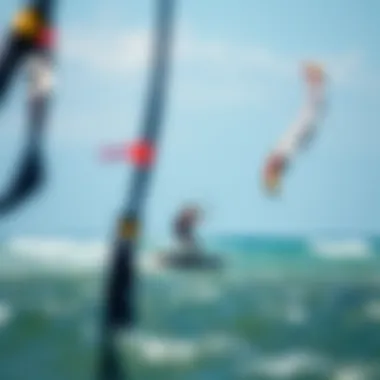
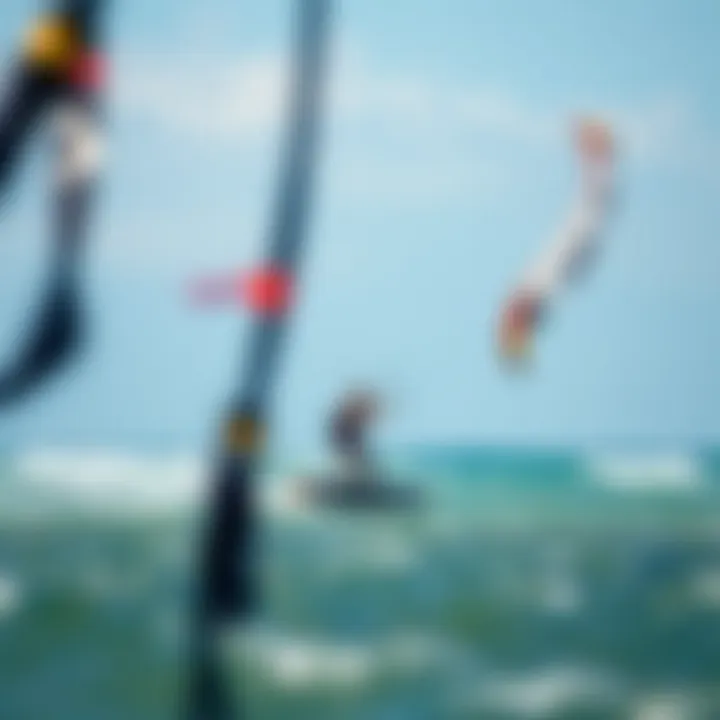
By grasping the geographical influences, seasonal changes, and local weather systems in your kiteboarding area, you can optimize your sessions for performance and safety. With this knowledge in hand, you’re well on your way to becoming a more adept kiteboarder, capable of reading the winds and riding with confidence.
Technological Advancements in Wind Measurement
As the world continues to evolve, the scientific field surrounding wind measurement has taken monumental strides. For kiteboarders, understanding these advancements is not only relevant but vital for safety and performance. The tools of today have transformed the way enthusiasts gauge wind conditions, offering features that were once disbelieved.
Smart Devices and IoT
In the age of smart devices and the Internet of Things (IoT), wind measurement has become more accessible and user-friendly. Smart anemometers and portable wind meters are now equipped with connectivity features that allow real-time data transmission to smartphones or dedicated devices. This technology gives kiteboarders instantaneous feedback about wind conditions, empowering them to make snap decisions.
For instance, a smart device integrated with anemometer capabilities can often provide not just speed but also direction and gust factors. Imagine being out on the water and receiving a notification on your smartphone alerting you of sudden wind shifts — that’s what these advancements are all about. The future of kiteboarding may well revolve around such smart gadgets that sync seamlessly with a rider’s personal routine.
- Benefits of Smart Devices:
- Real-time data access
- Greater reliability in understanding conditions
- Enhanced safety by alerting users of drastic changes
However, there are considerations. Not all devices offer the same level of accuracy. Some cheaper models might mislead the user with faulty data. Thus, when selecting a wind meter, it's crucial to do homework about reliability and reviews.
Integrating Data with Kiteboarding Gear
Integration is the name of the game in today’s technological world. Kiteboarding gear is also evolving to accommodate this data influx. Imagine your kite itself being designed to adapt based on the real-time wind measurements. Many manufacturers are now taking steps towards creating equipment that aligns with digital wind meters.
A practical example includes kites that adjust their shape to maximize performance based on existing wind conditions. When connected to wind measurement devices, they can change the angle or tension for optimal lift and control. This capability can enhance the overall riding experience, making it not only safer but more exhilarating.
Additionally, systems that combine GPS data with wind measurements can yield incredibly detailed performance metrics, giving kiteboarders insight into how specific conditions affect their rides. The synergy between ride analytics and real-world weather conditions paves the way for a deeper understanding of one’s performance on the water.
"The kiteboarding gear of tomorrow will likely be designed with the understanding that wind conditions are as dynamic as the sport itself."
In summary, these technological advancements in wind measurement are game changers for kiteboarders. By leveraging smart technologies and integrating them into gear, it opens up a universe of possibilities that enhances both safety and performance on the water. As the landscape continues to evolve, kiteboarders should stay informed to take full advantage of these developments.
Case Studies and Real-Life Examples
Understanding the influence of wind meters is not just about theoretical knowledge; it’s also about how this knowledge plays out in real life. This section aims to shed light on two distinct but impactful ways to engage with wind meters in kiteboarding: successful timing in kiteboarding events and accident prevention through wind monitoring. Through these case studies, we can see the value of accurate wind measurement vividly illustrated.
Successful Timing in Kiteboarding Events
The timing of kiteboarding events can greatly impact the outcomes, especially in competitive setups. Kiteboarders rely heavily on wind meters to gauge conditions and make split-second decisions. In one notable competition, the KiteMasters held in Maui, Hawaii, competitors utilized portable wind meters right on the beach to make last-minute adjustments to their gear and strategies.
These devices provided real-time data that helped them assess not only wind speed but also fluctuations that might indicate incoming gusts.
"Wind measurement is like having a sixth sense on the water; you can feel the wind, but understanding it lets you ride it!"
In this event, those who acted on the data from their wind meters were able to launch their kites when conditions peaked, giving them the advantage they needed. The successful timing enabled them to harness the best possible wind for their runs, demonstrating the direct correlation between accurate wind measurement and competitive success. Kiteboarders who nail their timing based on the readings can execute tricks flawlessly, ultimately leading to higher scores and better placement.
Accident Prevention through Wind Monitoring
Weather can be unpredictable, especially near coastal areas where kiteboarding is popular. A case in point is the unfortunate incidents reported on California’s beaches where kiteboarders faced accidents caused by sudden wind changes. In recent years, there’s been a push for enhanced safety measures, including the use of wind meters among recreational riders.
One specific incident involved a group of kiteboarders who ventured out only to experience rapidly shifting wind conditions that led to one rider being overpowered and ending up in perilous straits. However, thanks to the real-time data obtained from weather stations located on shore, many others were alerted within a short period.
The local surf shop had installed an accessible wind meter that fed data to a community bulletin. Kiteboarders who paid attention to these updates managed to avoid the water just as conditions turned sour, showcasing how monitoring can be a lifesaver.
- Safety Consideration: Accurate readings help anticipate possible dangers and avoid situations where riders could face serious injuries.
- Community Awareness: Sharing wind data fosters a culture of safety within the kiteboarding community, promoting an environment where everyone keeps an eye out for each other's safety.
Ultimately, the combination of individual awareness and community engagement through wind meters exemplifies how knowledge enhances safety while kiteboarding. The stakes are high, and recognizing the wind’s nature isn’t just about improving performance; it can also protect lives in scenarios where things can go awry.
Ending and Future Trends
In today’s rapidly evolving world of kiteboarding, understanding wind meters is crucial for both safety and performance enhancement. The technologies surrounding these essential instruments are moving at breakneck speed. If kiteboarders are to stay ahead of the game, they must grasp not just the existing tools but also anticipate the innovations on the horizon. This article highlighted that wind meters serve a dual purpose: they provide vital information that can significantly impact riding conditions while also elevating the overall experience on the water.
Summarizing Key Takeaways
To truly grasp the significance of weather wind meters, it's important to circle back on several key points:
- Types of Wind Meters: Understanding the varied instruments available, from mechanical to digital, along with portable options, can significantly enhance a kiteboarder's ability to gauge conditions accurately.
- Wind Measurements: Knowing how to interpret wind speed, direction, and gust factors allows for better decision-making while kiteboarding.
- Practical Applications: Kiteboarders can maximize their riding experiences by leveraging wind data for safety and performance optimization, especially under changing conditions.
- Influencing Factors: Recognizing the geographical and seasonal variations that impact wind can help prepare for unexpected shifts in conditions when out on the water.
The combination of these insights encourages kiteboarders to stay informed about weather dynamics and adapt their techniques accordingly.
Emerging Technologies in Wind Measurement
There’s no denying that we’re on the brink of a technological revolution in wind measurement. Some emerging trends worth noting include:
- Smart Devices and IoT Integration: Wind meters are increasingly becoming smart devices that connect to Internet of Things (IoT) platforms. This technology enables real-time monitoring and data sharing, creating a more informed kiteboarding community.
- Mobile Applications: Smartphone apps that aggregate wind data from various sources and present it intuitively are changing how kiteboarders plan their sessions. These apps often utilize algorithms to analyze trends and offer personalized guidance based on user location.
- Wearable Technology: Innovations like smartwatches can provide immediate feedback about wind conditions, allowing kiteboarders to make split-second decisions without having to reach for additional devices.
"The future of kiteboarding lies in how well we can leverage the technology available today, making every session not only safer but also more enjoyable."










